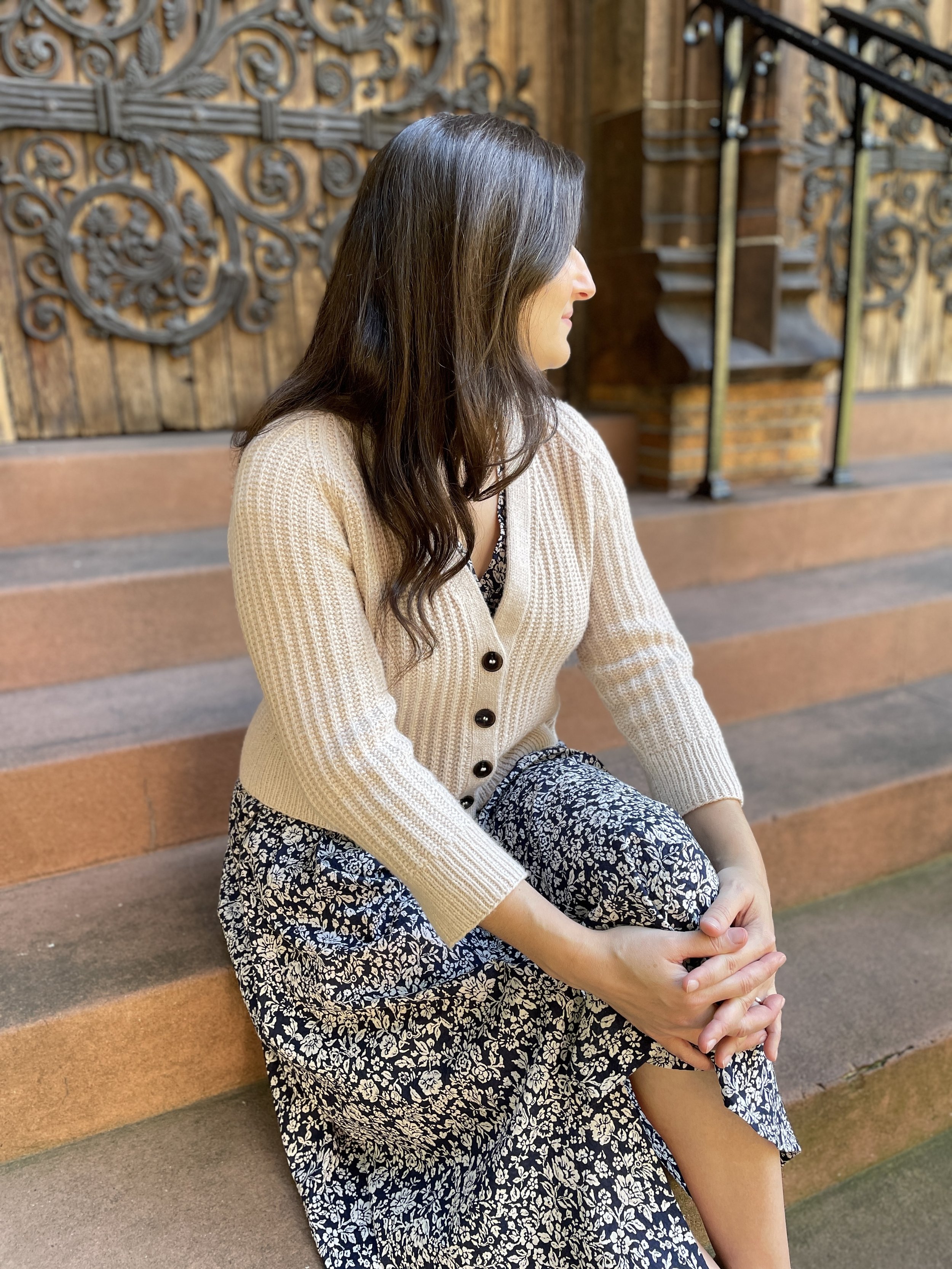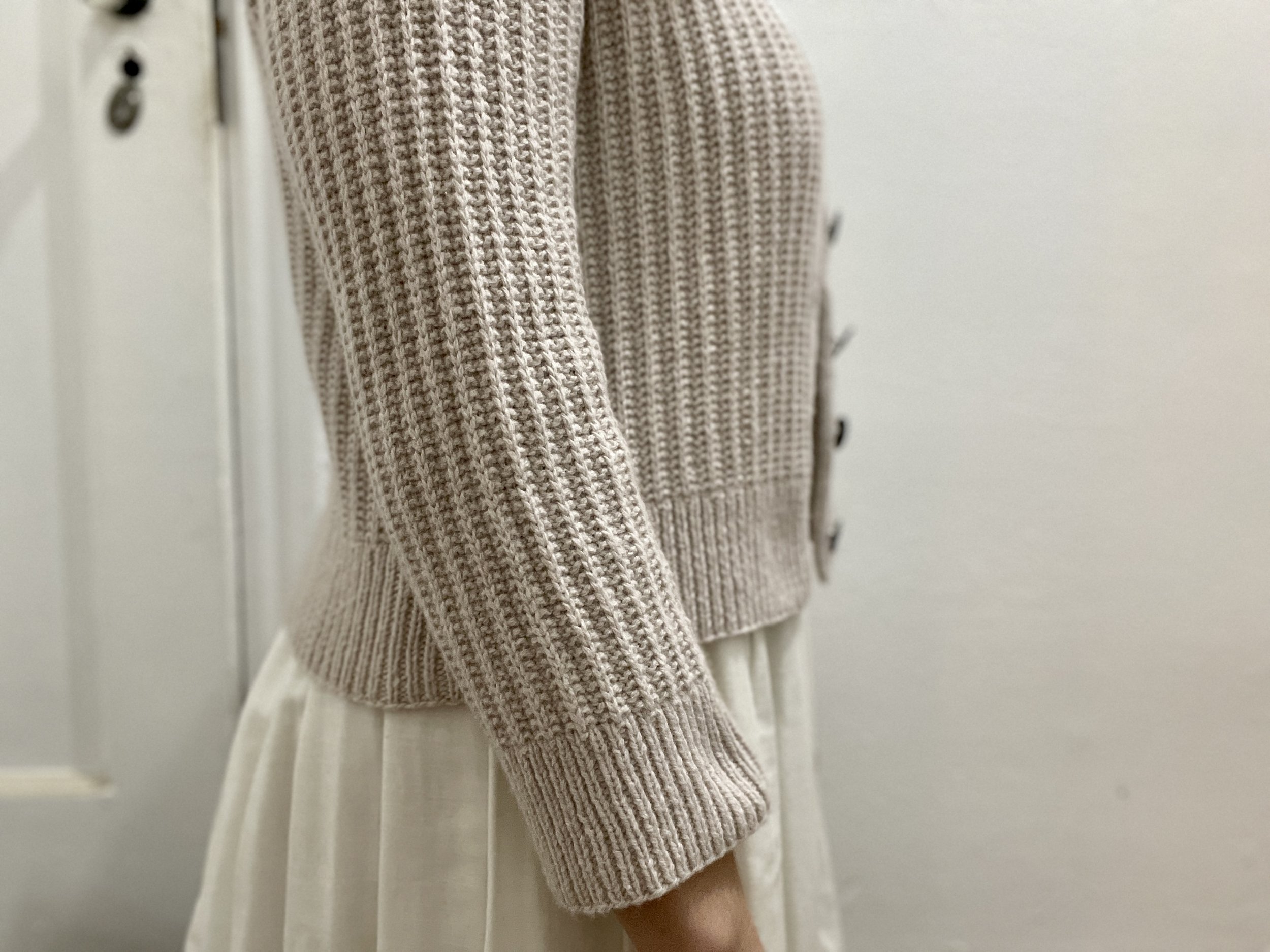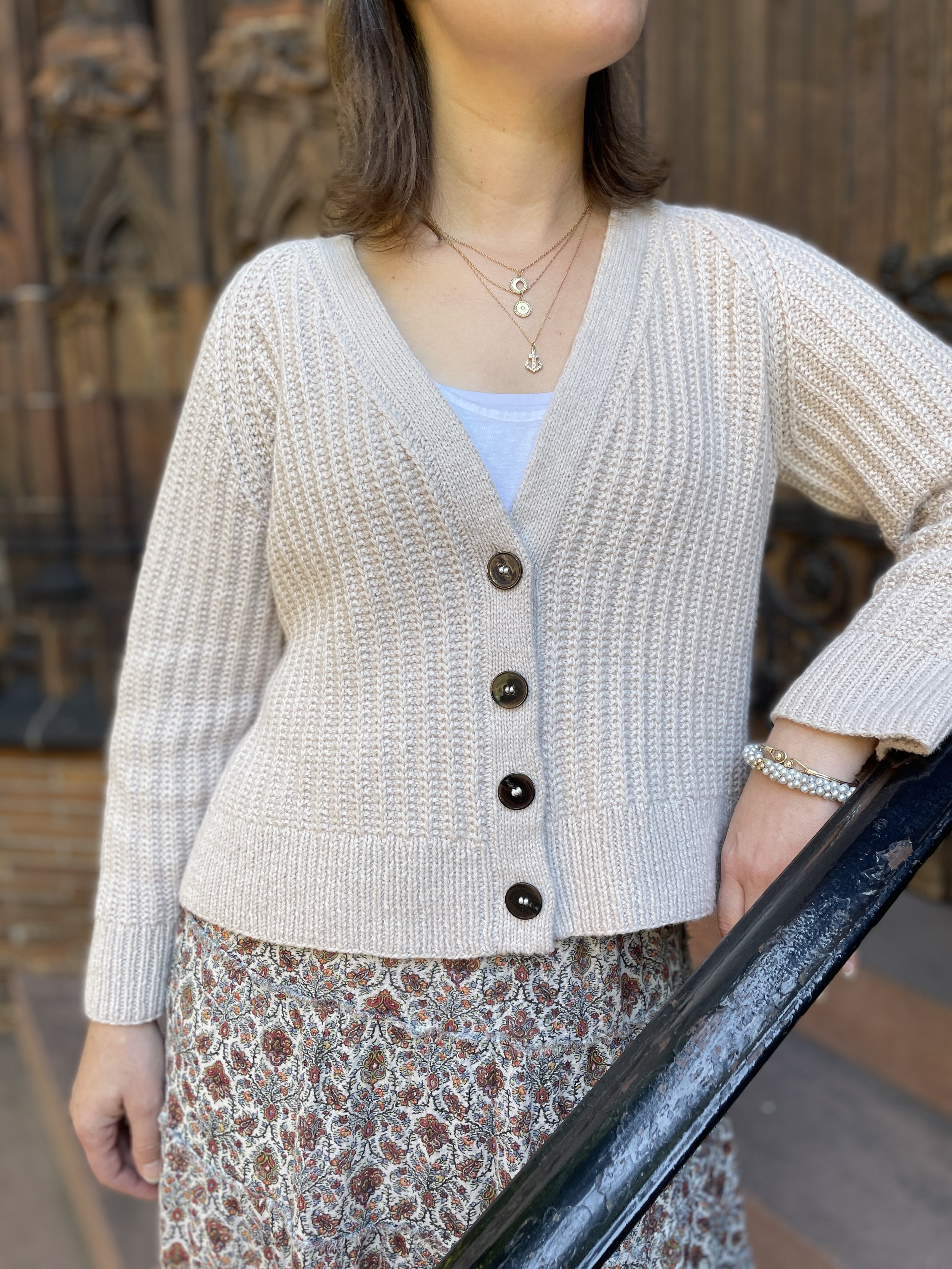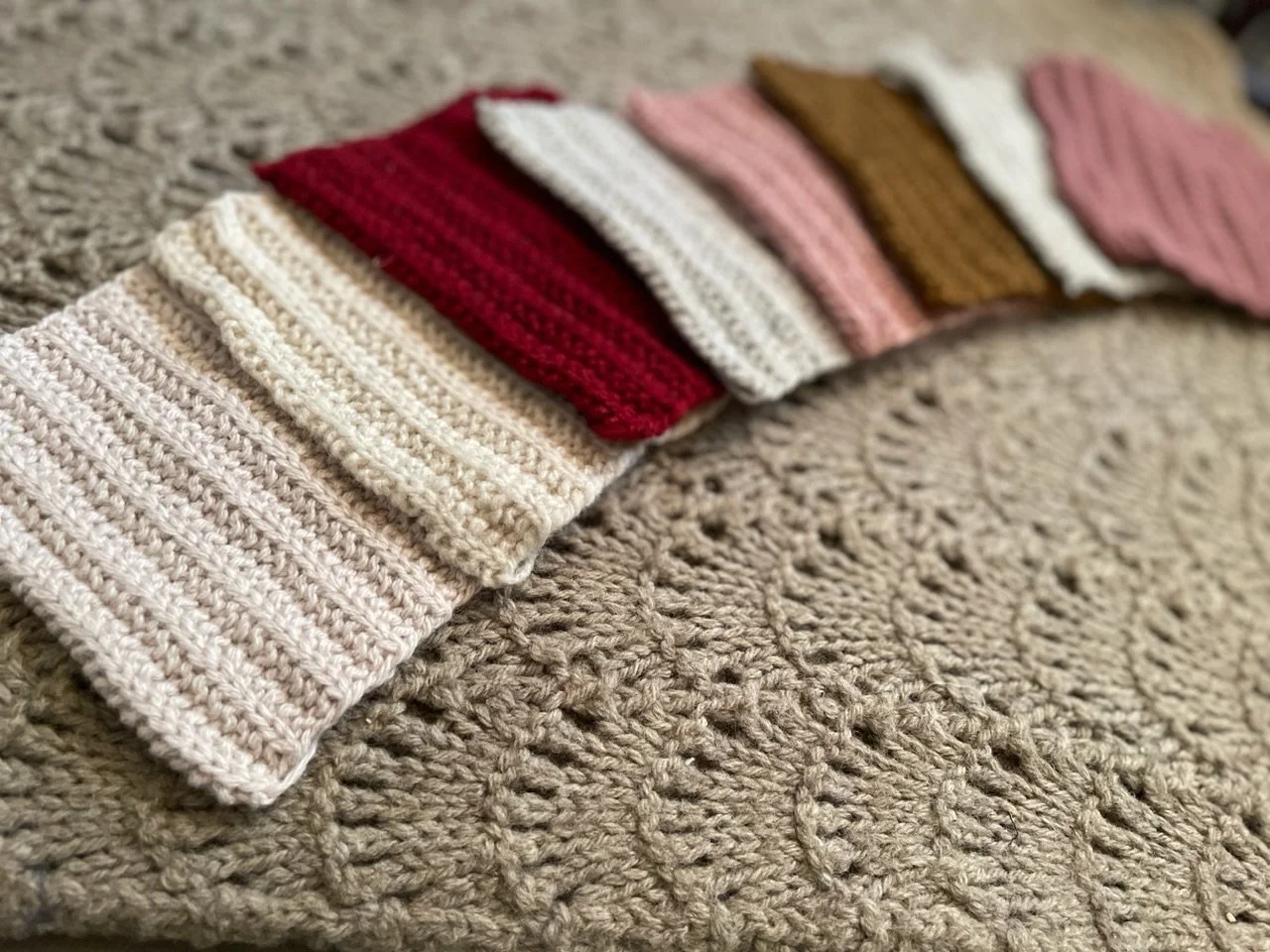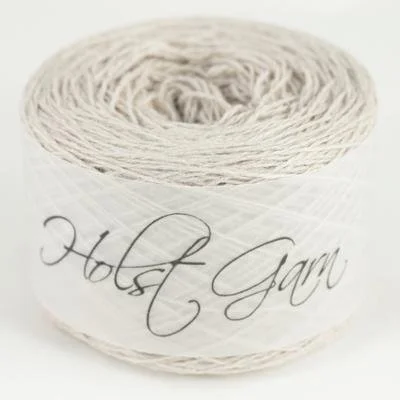NEW PATTERN: THE HORNBAEK CARDIGAN
I’m starting out this year’s Fall patterns with a return to my design roots. I love well-cut, tailored sweaters, in simple patterns, loaded with exquisite details. I call these my “Invisible Sweaters". Practically everything that is special about designs like these is hidden; it’s there just for you–– to delight you, to teach you something new perhaps, and most of all, to make you comfortable.
HORNBAEK IS A CROPPED V-NECK CARDIGAN, DESIGNED TO BE A WARDROBE STAPLE.
It is knit flat in pieces from the bottom up for structure and to take full advantage of the beauty of full-fashioned decreases.
The silhouette is a compound raglan construction which provides a better fit in the shoulders and in this piece it also adds to the flattering angle of the deep v-neck.
This piece is full of little details…like the offset of the rib hem and main stitch pattern, garter stitch selvedges for ease of blocking and seaming, and carefully placed increases and decreases to create the style lines.
If you like to just cast on and get knitting, the pattern is quite straightforward, providing rhythmic stitching on manageably-sized pieces. If you prefer to delve a little deeper and give some more thought to your options, then I trust you will find the supporting materials you need.
A design like this has what I call “good bones”; it has classic lines and a sound structure, which means that very often you can wear the sweater with different amounts of ease to achieve a different effect. The ease guidelines in the pattern suggest 2-4” of positive ease for a tailored fit (shown in the first two photos with 2 1/4” of ease) or more than 4” of ease for a more relaxed fit (shown in the second two photos with 5” of positive ease). This means that you would add either of these suggested measurements to your actual bust measurement and choose the size closest to the number you get. Whether you prefer a fitted cardigan or a boxy cardigan, most people can find both options here.
Personally, I made this fitted version for myself to wear over light dresses or with cropped pants in spring, summer and early fall, but I plan to make a version with more ease for late fall/winter layering as well. As ever, your yarn choice can affect how much ease is required, but all of the suggested yarns, though different, have enough balance of structure and drape to work in both fit profiles.
WHAT’S INCLUDED IN THE PATTERN
I’ve been thinking more and more about making what I call “Knitter’s Companion Patterns”; patterns that give you a bit more guidance in certain aspects of the knitting, or the yarn choice, or how to customize the pattern––or possibly all of these. It’s not a substitute for me sitting next to you and talking you through the sweater, but it’s about the next best thing I hope. A sort of bridge between teaching and pattern writing. The main idea being that most of what you need should be in the pattern (within reason) and so if you’re stuck someplace without reference books or (heaven forbid!) the internet, you can still make headway on your project.
The goal here was to provide both clear instructions to deliver what you see in the sample AND as many ways of customizing the sweater as possible. To that end, there are notes about adding length and yardage estimates for what you will need both for the body and the sleeves (so you can adjust them separately if desired).
I’ve included full instructions for a choice of 1x1 Ribbed Band or a no-sew Double Knit Buttonband with Vertical Buttonholes (a new variation of my personal method). Both treatments are fully customizable for the number of buttons you prefer, something that is very useful because a v-neck will hit every person differently. With these instructions you can try on the sweater and place the buttons exactly where you need them. There are also two methods given for finishing the buttonband at the back neck, one seamless and one decorative.
So between the ease guidelines, the length options for sleeves and body, the two types of buttonbands and the customizable number of buttons, I hope you will find plenty to aid you in making this sweater your own. And the final component to that was to give you plenty of choices over the fabric itself.
This pattern, because of its simple lines and structured stitch pattern, was an opportunity to take a deep dive into yarn choice (my favorite topic) and do some extensive swatching to find you a number of different options for the sweater; so that no matter where you live or what your budget is, you have options that will produce a beautiful, long-wearing sweater. And I especially hope that so many choices might make it possible for you to shop at your local yarn store and see the yarn in person.
My jumping off point for this design was to make a transition season piece using one of my favorite yarns–– Holst Garn–– which has been a household staple for me for many years and yet has never appeared in any of my patterns. I was first introduced to Holst Garn on a trip to the Netherlands many years ago and I was so smitten that I ordered all the color cards for all of their yarns and my mother and I made a tremendous number of swatches to test them all out. At the time I was mostly publishing in magazines and as it was difficult to get the yarn in the States I could never use it in a design. But times have changed and now you can either order it directly from Holst Garn (and especially if you’re in Europe this might be simplest) or from one of shops carrying it here in the US, including The Yarnery in St. Paul, Minnesota. Holst Garn was kind enough to provide the yarn for this sample and I couldn’t be happier to have the opportunity to show what their yarn can do.
A word on color…
Don’t let my sedate color choice in the sample mislead you; the Holst Garn palette is rich and spectacular. This yarn comes as both skeins AND cones and is an incredible quality for the price. My mother has a sweater knit in this yarn that is 10 years old and looks brand new; it wears beautifully. It’s also machine washable! (which you can read more about in the pattern notes here)
The other yarns I’ve swatched with open up a whole other world of possibilities for fiber and palette. All of these yarns will yield the pattern gauge so you can also make Hornbaek in:
Juniper Moon Patagonia (organic merino; woolen spun, also machine washable)
De Rerum Natura Ulysse (organic French and Portuguese merino; woolen spun)
mYak Tibetan Cloud Wool (100% Tibetan Wool, worsted spun)
mYak Baby Yak Lace (100% baby yak; worsted spun)
Garthenor Preseli (100% British wool, Polwarth, Romney and Hebridean; worsted spun)
Brooklyn Tweed Loft (100% American Targhee-Columbia Wool; woolen spun)
I also swatched in some leftovers from my Saltings sweater (sock weight merino held with silk mohair from Onyx Fiber Arts, now sadly closed); but there are so many of these combinations of stranding a wool with a silk mohair out there that I think you have plenty of options. Ones that spring to mind are: Catherine Lowe, Knitting for Olive and Bises & Bûches or you could hold a thread of De Rerum Natura’s new yarn Bérénice or Rowan Kid Silk Haze with another yarn. The possibilities go on and on.
Swatches left to right; Holst Garn Coast (held double), Brooklyn Tweed Loft, De Rerum Natura Ulysse, Juniper Moon Patagonia, Onyx Fiber Arts Sock and Silk Mohair, mYak BabyYak Lace (held double), Garthenor Preseli, mYak Tibetan Cloud.


